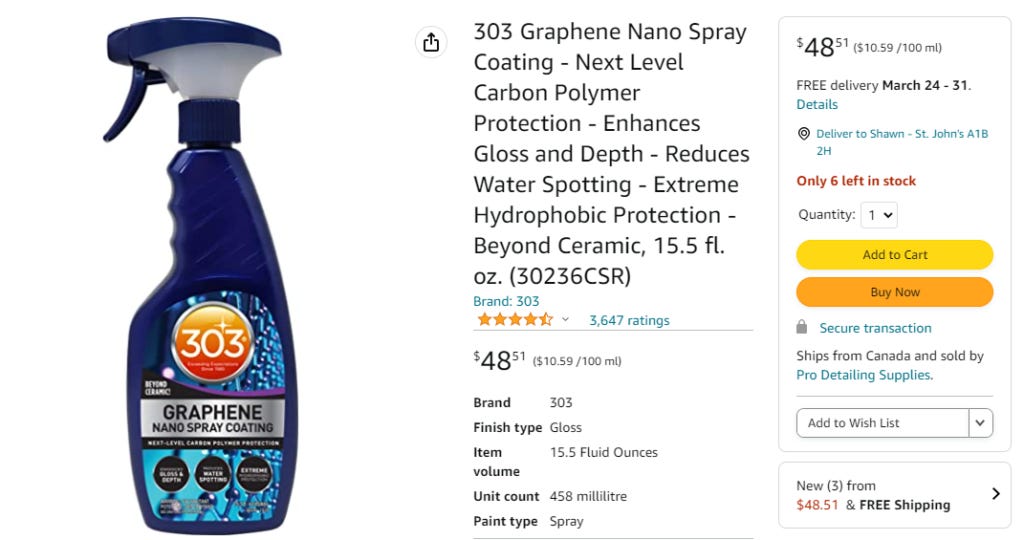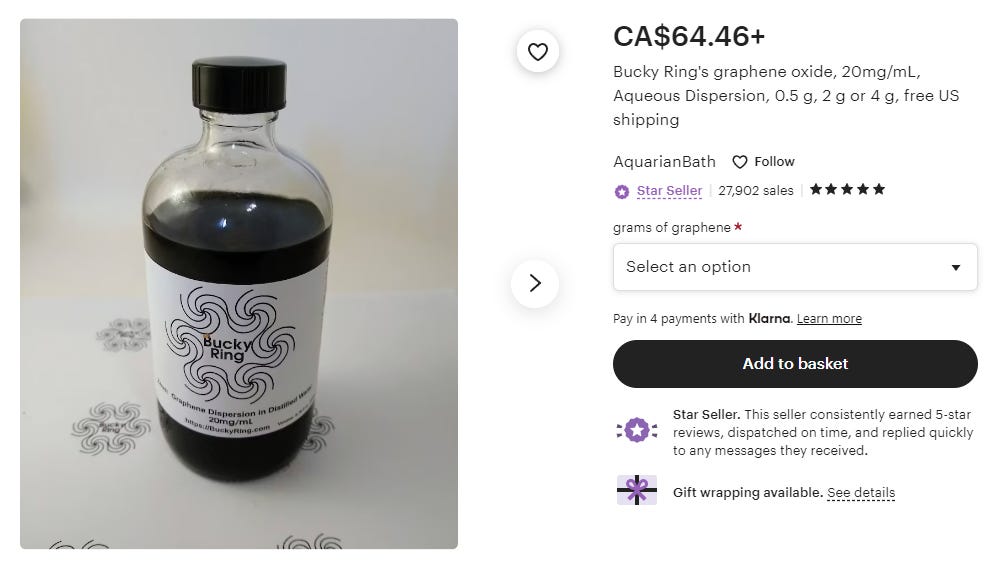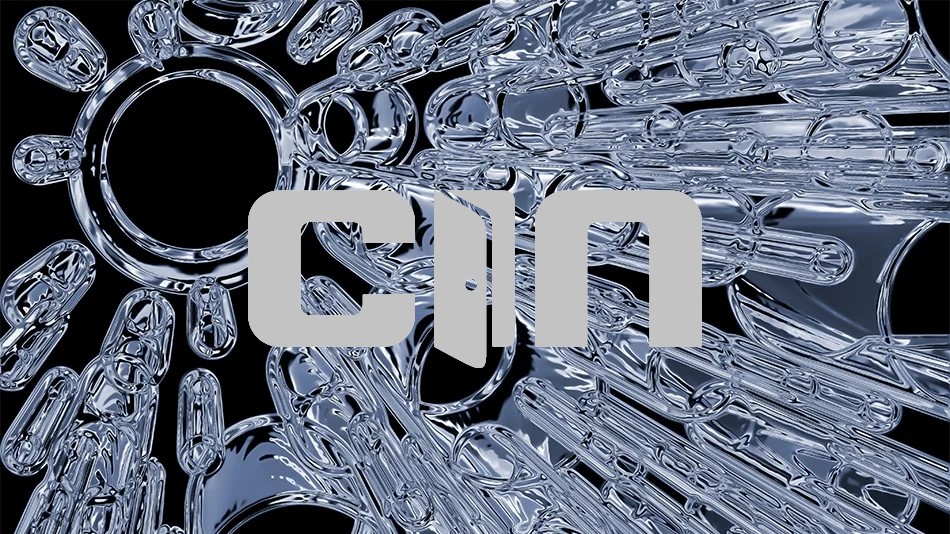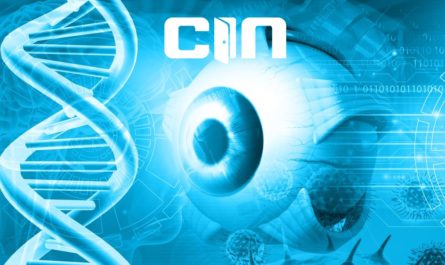This segment is part of the larger story about how Transhumanists are bringing about their Singularity utilizing 5G, Graphene Oxide, mRNA technology.. and your FEAR. I encourage you to take “GQD Particle: The Transhumanist Quantum Agenda” from the top. SPM
The internet is alive with the debate; “Is there Graphene Oxide in the mRNA vaccine?” Well, of course there is, and those who say there is not are liars. The bigger question is; “What is Graphene Oxide not in?”.
Fact is, Graphene Oxide has either been added to your environment or it has contaminated your environment. In doing so, you are contaminated. Let us explore.
While Graphene Oxide is not commonly listed as an ingredient, its carrier agent Polyethylene Glycol (PEG, PEGylated GO, PEG3350) is. Also known as polyethylene oxide (PEO) or polyoxyethylene (POE). Other names include Kollisolv, Carbowax, GoLYTELY, GlycoLax, Fortrans, TriLyte, Colyte, Halflytely, macrogol, MiraLAX, MoviPrep.
It is said Graphene Oxide is added to PEG to stabilize for storage. 1
PEG is in the vaccine. 2
The world’s largest PEG supplier called Borenpharm Co. located in Wuhan, China. They make the lipid nanoparticles for the USA, Europe, India, … One of their main sponsors is Eli Lilly. 3
Shocking information came forward in the EU parliament in January 2022. It was explained that GO is electrical in Giga Hz frequency and they wanted confirmation if GO is in the vaccine. 4 EVERYONE believed it was just the vaccine, however we know today that it is in everything!
We at CIN have also done the research and determined GO is electrically active in the 5G Giga Hz range! 5
Polyethylene Glycol IS PEGylated Graphene Oxide. Once you understand this, you will understand that Graphene Oxide is in everything Polyethylene Glycol is in.
Let’s also be clear, Graphene Oxide is poison. 6
Products containing Graphene Oxide: 7
Medical uses
- Pharmaceutical-grade PEG is used as an excipient in many pharmaceutical products, in oral, topical, and parenteral dosage forms.
- PEG is the basis of a number of laxatives (as MiraLax, RestoraLAX, etc.). Whole bowel irrigation with polyethylene glycol and added electrolytes is used for bowel preparation before surgery or colonoscopy or for children with constipation. Macrogol (with brand names such as Laxido, GoLytely and Miralax) is the generic name for polyethylene glycol used as a laxative. The name may be followed by a number which represents the average molecular weight (e.g. macrogol 3350, macrogol 4000 or macrogol 6000).
- The possibility that PEG could be used to fuse axons is being explored by researchers studying peripheral nerve and spinal cord injury.
- An example of PEG hydrogels (see Biological uses section) in a therapeutic has been theorized by Ma et al. They propose using the hydrogel to address periodontitis (gum disease) by encapsulating stem cells in the gel that promote healing in the gums. The gel with encapsulated stem cells was to be injected into the site of disease and crosslinked to create the microenvironment required for the stem cells to function.
- PEGylation of adenoviruses for gene therapy can help prevent adverse reactions due to pre-existing adenovirus immunity.
- A PEGylated lipid is used as an excipient in both the Moderna and Pfizer–BioNTech vaccines for SARS-CoV-2. Both RNA vaccines consist of messenger RNA, or mRNA, encased in a bubble of oily molecules called lipids. Proprietary lipid technology is used for each. In both vaccines, the bubbles are coated with a stabilizing molecule of polyethylene glycol. As of December 2020 there is some concern that PEG could trigger allergic reaction, and in fact allergic reactions are the driver for both the United Kingdom and Canadian regulators to issue an advisory, noting that: two “individuals in the U.K. … were treated and have recovered” from anaphylactic shock.] As of 18 December, the US CDC stated that in their jurisdiction six cases of “severe allergic reaction” had been recorded from more than 250,000 vaccinations, and of those six only one person had a “history of vaccination reactions”.
Chemical uses
- Polyethylene glycol is also commonly used as a polar stationary phase for gas chromatography, as well as a heat transfer fluid in electronic testers.
- PEG is frequently used to preserve waterlogged wood and other organic artifacts that have been salvaged from underwater archaeological contexts, as was the case with the warship Vasa in Stockholm, and similar cases. It replaces water in wooden objects, making the wood dimensionally stable and preventing warping or shrinking of the wood when it dries. In addition, PEG is used when working with green wood as a stabilizer, and to prevent shrinkage.
- PEG has been used to preserve the painted colors on Terracotta Warriors unearthed at a UNESCO World Heritage site in China. These painted artifacts were created during the Qin Shi Huang (first emperor of China) era. Within 15 seconds of the terra-cotta pieces being unearthed during excavations, the lacquer beneath the paint begins to curl after being exposed to the dry Xi’an air. The paint would subsequently flake off in about four minutes. The German Bavarian State Conservation Office developed a PEG preservative that when immediately applied to unearthed artifacts has aided in preserving the colors painted on the pieces of clay soldiers.
- PEG is often used (as an internal calibration compound) in mass spectrometry experiments, with its characteristic fragmentation pattern allowing accurate and reproducible tuning.
- PEG derivatives, such as narrow range ethoxylates, are used as surfactants.
- PEG has been used as the hydrophilic block of amphiphilic block copolymers used to create some polymersomes.
- PEG is a component of the propellent used in UGM-133M Trident II Missiles, in service with the United States Navy.
Biological uses
- An example study was done using PEG-diacrylate hydrogels to recreate vascular environments with the encapsulation of endothelial cells and macrophages. This model furthered vascular disease modeling and isolated macrophage phenotype’s effect on blood vessels.
- PEG is commonly used as a crowding agent in in vitro assays to mimic highly crowded cellular conditions. Although polyethylene glycol is considered biologically inert, it can form non-covalent complexes with monovalent cations such as Na+, K+, Rb+, and Cs+, affecting equilibrium constants of biochemical reactions.
- PEG is commonly used as a precipitant for plasmid DNA isolation and protein crystallization. X-ray diffraction of protein crystals can reveal the atomic structure of the proteins.
- PEG is used to fuse two different types of cells, most often B-cells and myelomas in order to create hybridomas. César Milstein and Georges J. F. Köhler originated this technique, which they used for antibody production, winning a Nobel Prize in Physiology or Medicine in 1984.
- Polymer segments derived from PEG polyols impart flexibility to polyurethanes for applications such as elastomeric fibers (spandex) and foam cushions.
- In microbiology, PEG precipitation is used to concentrate viruses. PEG is also used to induce complete fusion (mixing of both inner and outer leaflets) in liposomes reconstituted in vitro.
- Gene therapy vectors (such as viruses) can be PEG-coated to shield them from inactivation by the immune system and to de-target them from organs where they may build up and have a toxic effect. The size of the PEG polymer has been shown to be important, with larger polymers achieving the best immune protection.
- PEG is a component of stable nucleic acid lipid particles (SNALPs) used to package siRNA for use in vivo.
- In blood banking, PEG is used as a potentiator to enhance detection of antigens and antibodies.
- When working with phenol in a laboratory situation, PEG 300 can be used on phenol skin burns to deactivate any residual phenol.
- In biophysics, polyethylene glycols are the molecules of choice for the functioning ion channels diameter studies, because in aqueous solutions they have a spherical shape and can block ion channel conductance.
Commercial uses
- PEG is the basis of many skin creams (as cetomacrogol) and personal lubricants.
- PEG is used in a number of toothpastes as a dispersant. In this application, it binds water and helps keep xanthan gum uniformly distributed throughout the toothpaste.
- PEG is also under investigation for use in body armor, and in tattoos to monitor diabetes.
- In low-molecular-weight formulations (e.g. PEG 400), it is used in Hewlett-Packard designjet printers as an ink solvent and lubricant for the print heads.
- PEG is also used as an anti-foaming agent in food and drinks – its INS number is 1521 or E1521 in the EU.
Industrial uses
- A nitrate ester-plasticized polyethylene glycol (NEPE-75) is used in Trident II submarine-launched ballistic missile solid rocket fuel.
- Dimethyl ethers of PEG are the key ingredient of Selexol, a solvent used by coal-burning, integrated gasification combined cycle (IGCC) power plants to remove carbon dioxide and hydrogen sulfide from the syngas stream.
- PEG has been used as the gate insulator in an electric double-layer transistor to induce superconductivity in an insulator.
- PEG is also used as a polymer host for solid polymer electrolytes. Although not yet in commercial production, many groups around the globe are engaged in research on solid polymer electrolytes involving PEG, with the aim of improving their properties, and in permitting their use in batteries, electro-chromic display systems, and other products in the future.
- PEG is injected into industrial processes to reduce foaming in separation equipment.
- PEG is used as a binder in the preparation of technical ceramics.
- PEG was used as an additive to silver halide photographic emulsions.
Entertainment uses
- PEG is used to extend the size and durability of very large soap bubbles.
- PEG is the main ingredient in many personal lubricants. (Not to be confused with propylene glycol.)
- PEG is the main ingredient in the paint (known as “fill”) in paintballs.
Polyethylene Glycol also known as Macrogol. 8
PEGylated Drugs. 9
- A PEGylated lipid is used as an excipient in both the Moderna vaccine and the Pfizer–BioNTech COVID-19 vaccine. Both RNA vaccines consist of Messenger RNA, or mRNA, encased in a bubble of oily molecules called lipids. Proprietary lipid technology is used for each. In both vaccines, the bubbles are coated with a stabilizing molecule of polyethylene glycol. As of December 2020, there is some concern that PEG could trigger an allergic reaction, as appears to have occurred by 19 December, in at least three “Alaska health care worker” people who were administered the Pfizer–BioNTech COVID-19 vaccine. The particular PEGylated molecule in the Moderna vaccine is known as DMG-PEG 2000.
- Pegvaliase (Biomarin) – PEGylated recombinant phenylalanine ammonia-lyase for the treatment of Phenylketonuria, approved by the FDA for the US in May 2018.
- Adynovate – PEGylated Antihemophilic Factor VIII for the treatment of patients with hemophilia A. (Baxalta, 2015)
- Irinotecan liposome (Onivyde) – PEGylated liposomal irinotecan hydrochloride trihydrate for the treatment of metastatic pancreatic cancer in adults proceeding treatment with gemcitabine-based therapy. (Ipsen, 2015)
- Plegridy – PEGylated Interferon Beta-1a for the treatment of patients with relapsing forms of multiple sclerosis. (Biogen, 2014)
- Naloxegol (Movantik) – PEGylated Naloxol for the treatment of opioid-induced constipation in adult patients with chronic non-cancer pain (un-pegylated methadone can cause adverse gastrointestinal reactions). (AstraZeneca, 2014)
- Peginesatide (Omontys) – once-monthly medication to treat anemia associated with chronic kidney disease in adult patients on dialysis (Affymax/Takeda Pharmaceuticals, 2012)
- Pegloticase (Krystexxa) – PEGylated uricase for the treatment of gout (Savient, 2010)
- Certolizumab pegol (Cimzia) – monoclonal antibody for treatment of moderate to severe rheumatoid arthritis and Crohn’s disease, an inflammatory gastrointestinal disorder (Nektar/UCB Pharma, 2008)
- Methoxy polyethylene glycol-epoetin beta (Mircera) – PEGylated form of erythropoietin to combat anemia associated with chronic kidney disease (Roche, 2007)
- Pegaptanib (Macugen) – used to treat neovascular age-related macular degeneration (Pfizer, 2004)
- Pegfilgrastim (Neulasta) – PEGylated recombinant methionyl human granulocyte colony-stimulating factor for severe cancer chemotherapy-induced neutropenia (Amgen, 2002)
- Pegvisomant (Somavert) – PEG-human growth hormone mutein receptor antagonist for treatment of Acromegaly (Pfizer, 2002)
- Peginterferon alfa-2a (Pegasys) – PEGylated interferon alpha for use in the treatment of chronic hepatitis C and hepatitis B (Hoffmann-La Roche, 2002)
- Peginterferon alfa-2b (PegIntron) – PEGylated interferon alpha for use in the treatment of chronic hepatitis C and hepatitis B (Schering-Plough/Enzon, 2000)
- Doxorubicin HCl liposome (Doxil/Caelyx) – PEGylated liposome containing doxorubicin for the treatment of cancer (Alza, 1995)
- Pegaspargase (Oncaspar) – PEGylated L-asparaginase for the treatment of acute lymphoblastic leukemia in patients who are hypersensitive to the native unmodified form of L-asparaginase (Enzon, 1994). This drug was recently approved for front line use.
- Pegademase bovine (Adagen) – PEG-adenosine deaminase for the treatment of severe combined immunodeficiency disease (SCID) (Enzon, 1990)
Of course, Graphene Oxide is not hidden in everything, there are many uses that do not hide GO‘s uses.
City water filtration. Yes, Graphene Oxide is in our water. 10
Airplane fuel. Yes, Graphene Oxide is in our air. 11
Pesticides. Yes, Graphene Oxide is in our land. 12
It is not hyperbole, Graphene Oxide is in everything. We are experiencing an epidemic proportion of involuntary consumption of Graphene Oxide. 13
Graphene Oxide in Drugs is an obvious issue. 14 15 But the not so obvious issue is that Graphene Oxide is in supplements, as well. Vitamin D formulated with Graphene Oxide to improve absorption. 16
In our own article explaining how 5G reduced Graphene Oxide in the body, we list numerous supplements and medicines containing Graphene Oxide. 17 Not only that, supplements have a NEGATIVE IMPACT IN 5G ENVIRONMENT which we will get into shortly!
You can turn this into a game, like looking for license plates on the highway… Can you spot the products laced with Graphene Oxide?
Graphene Oxide in HEPA filters. 18
Graphene Oxide in food packaging “helps with hygiene”. 19
Graphene Oxide in cosmetics, hair and skin care. 20
Graphene Quantum Dots are in our “legal” marijuana! 21
Of course, why not apply Graphene Oxide yourself. Here it is in handy spray bottle form. Think of the hours you can spend dreaming up items to apply with Graphene Nano Spray Coating. 22

Oh look! Graphene Oxide on Etsy! I can add GO to all my homemade crafts! Looks like customers love adding it to soap and shampoo. 23

Now that you understand Graphene Oxide is in everything, you might want to ask yourself; “why?”.
Don’t be a victim of 5G and Graphene Oxide Nanotechnology, protect yourself with Scalar Wave Technology with Blushield EMF Protection, and remember, NO FEAR.
- Graphene oxide stabilized polyethylene glycol for heat storage: Royal Society of Chemistry, 2012 ↩︎
- PEG in the Pfizer vaccine: not a good start: The BMJ, December 10, 2020 ↩︎
- Provide Nanoparticle Reagents and Conjugation Technology: Wuhan Borenpharm Co., Ltd. ↩︎
- Time for the truth on the presence of graphene in the COVID-19 vaccines: European Parliament, January 24,2022 ↩︎
- Reduced Graphene Oxide: The Real Problem Behind 5G: CIN, January 15, 2023 ↩︎
- Graphene Flagship is a lying poisoning monster: CIN, January 26, 2023 ↩︎
- Polyethylene glycol: Wikipedia ↩︎
- Macrogol: Wikipedia ↩︎
- PEGylation: Wikipedia ↩︎
- GRAPHENE FOR WATER SANITISATION – A MIRACLE MATERIAL: My New Lab, January 2017 ↩︎
- Graphene oxide could improve aircraft fuel: Graphene Info ↩︎
- Emerging role of graphene oxide as sorbent for pesticides adsorption: Experimental observations analyzed by molecular modeling: Science Direct, February 10, 2021 ↩︎
- Involuntary graphene intake with food and medicine: Royal Society of Chemistry, 2014 ↩︎
- A Comprehensive List of Drugs Containing Graphene Oxide: Hilpent, September 22, 2022 ↩︎
- Biomedical Applications of Graphene Nanomaterials and Beyond: ResearchGate, June 2018 ↩︎
- Nano-graphene oxide and vitamin D delivery: AIP Publishing, January 10, 2018 ↩︎
- Negative Impact of Supplements in 5G Environment: CIN, January 22, 2023 ↩︎
- Using Graphene Oxide to Efficiently Filter Particulate Matter at High Concentrations: EI, June 30, 2020 ↩︎
- Applications of Graphene in Food and Beverage Packaging: Nanografi ↩︎
- Cosmetic Products Produced with Graphene Oxide: Graphene Up ↩︎
- CBD, Legal Weed & Graphene Quantum Dots: CIN, September 23, 2023 ↩︎
- https://www.amazon.ca/303-Graphene-Nano-Spray-Coating/dp/B08K3N5QP5/ ↩︎
- https://www.etsy.com/ca/listing/546773107/bucky-rings-graphene-oxide-20mgml ↩︎




3 thoughts on “Graphene Oxide is in everything! No hyperbole.”